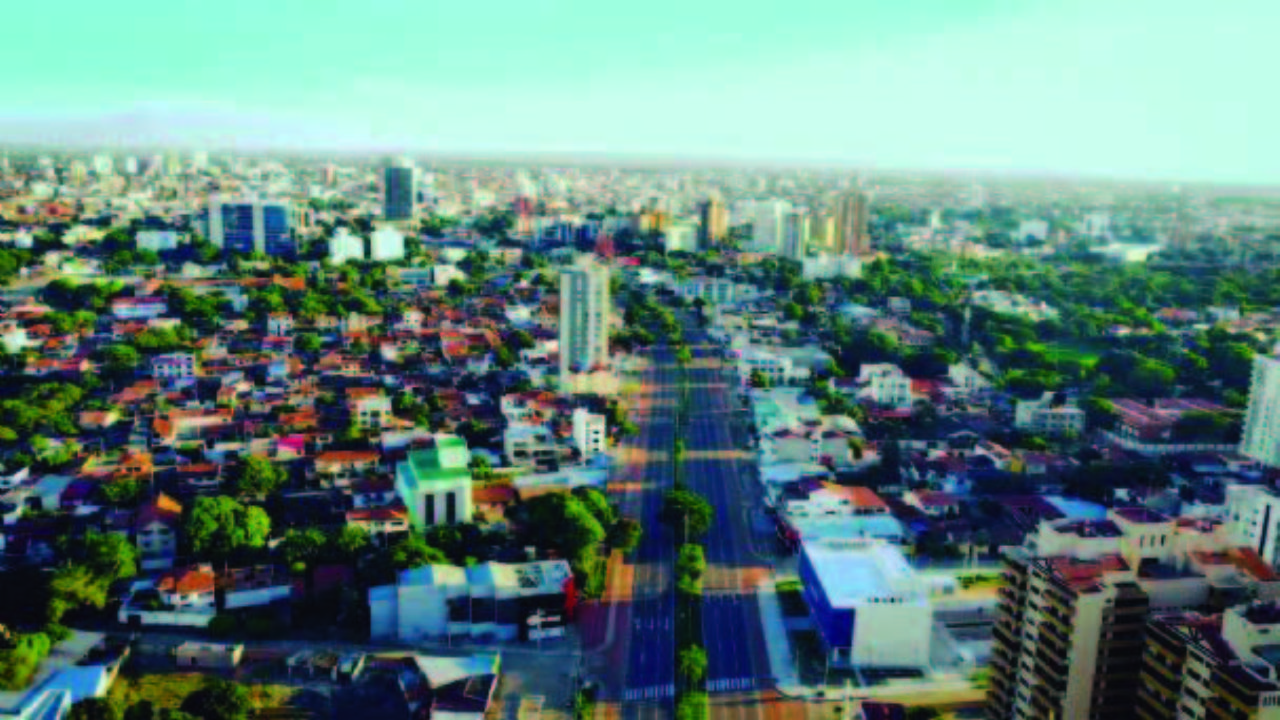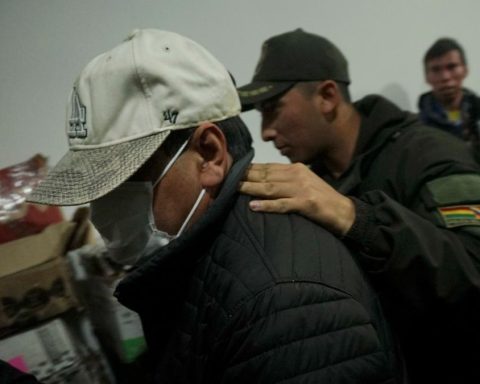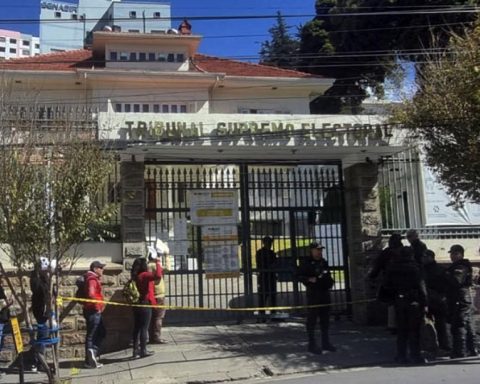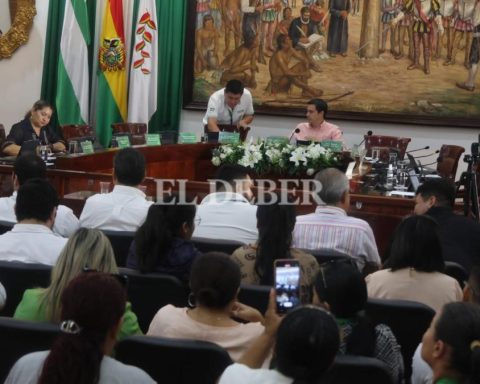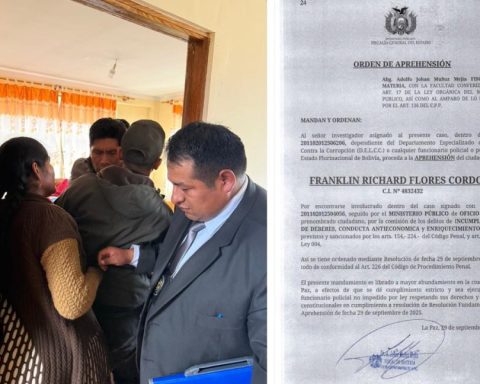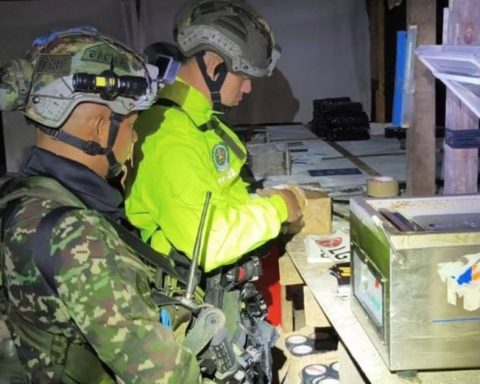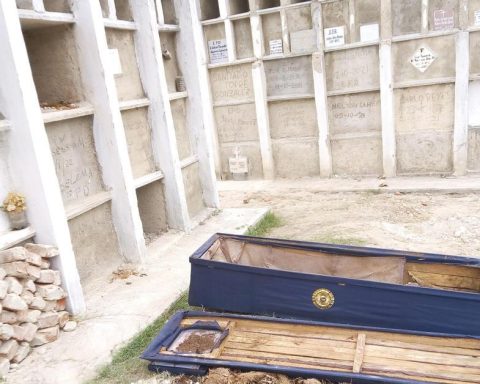Malkya Tudela / Santa Cruz
Santa Cruz de la Sierra is receiving a wave of professional migrants from La Paz who arrive tired of social conflicts in the seat of government and attracted by economic opportunities. Whether or not their project is to stay in the Santa Cruz capital, they have an interest in contributing to citizen culture and productivity.
Paceños who migrated.
Photo: Natali Vargas
The idea of moving and starting over has accompanied Natalí Vargas since she was a child, when she moved frequently due to her father’s work. So, in 2019, when La Paz was the center of the political crisis and she was in her first months of pregnancy, she thought: “I want to get out of here”.
The pandemic only aggravated the situation because it forced her to go into complete seclusion, she lost her father and had to deal with her husband’s late payments. “In August 2021, my boss calls me and asks if she would encourage me to go to Santa Cruz. They couldn’t find anyone to handle the public relations and media relations business. They offered to pay me for the transfer,” says Natalí.
With the security of a double salary and a position of increased responsibility, she, her husband, their one-year-old son and their puppy moved to Santa Cruz six months ago. The humidity of the environment and feeling lost between her rings still cause discomfort, but the home office, the spacious environments, the public spaces to walk, better quality of sleep and economic opportunities are the other side of these inconveniences.
“I am still not able to say, as I think it happens to many, that I stay because I love it. We want to return to La Paz because we have built plans for the future there. I would like my son to study there because I do see certain differences in the social environment,” says Natalí.
What are those gaps? “In Santa Cruz there is greater relevance to appearance” and “less to content analysis” in the field of public relations; in society, “machismo is freer” and “some women still want to show themselves honest in the face of moral demands”, although this may only be the trait of a social segment, she explains.
During her move, she heard the stevedores say that they had transferred several young women from La Paz and that they were the heads of the family. The workers had one more case to tell when she also signed the contract for the service.
Now installed, Natalí sees that the economic center of the country is in Santa Cruz and that it works “easier”, although the companies have one foot in La Paz because it is the political center. “People are more willing to buy, and that’s good for anyone who wants to start a business,” she says.
The rules of coexistence seem to work differently in the Santa Cruz capital. “In La Paz, if a neighbor exceeds decibels, you can call the Mayor’s Office, complain to the neighborhood council, go to some instance, not here. There is no citizen culture. People don’t take ownership of the city.”
“It would not bother me at all to feel from the city, to see how they are doing beautiful things and to contribute to that. But I don’t see the Mayor’s Office, I don’t know what vision it has of citizenship. If you don’t do something now, I don’t know how the city will grow, it’s very sad. It is growing like El Alto, only hot,” says Natalí.
According to INE projections, in 2020 Santa Cruz had 3.3 million inhabitants in the department. The Santa Cruz capital, Warnes, La Guardia and Montero, that is, the metropolitan region, are home to 66.8% of the population. 33.2% is concentrated in other municipalities.
“It’s a magnet”

Photo: Rafael Sagarnaga
Rafael Sagárnaga had already been living between La Paz and Tarija for eight years for his work as a journalist. In 2017, his wife got sick and “all the demons of La Paz joined in.” Street blockades, the health insurance crisis, political problems were the context in which his first girlfriend and partner of 27 years of marriage died.
“When that happened, I saw my wife on every corner of La Paz, and I said ‘I have to go.’ In addition, her marches irritated me and even the noise of the garbage trucks reminded me of her agony, ”he says.
It will be five years since they chose Santa Cruz to start a new life. The city is “less aggressive”, there is “more oxygen” and a new couple has appeared to build other projects.
Job opportunities and income diversification are also at hand. The journalism he practices has also benefited because he was able to make relevant coverage on the borders with Brazil, Argentina and Paraguay.
For Sagárnaga, Santa Cruz de la Sierra is “an adolescent city, where cultural life is beginning to flourish.”
And he is not far from that cultural life because he lives outside the urban area. In his idea of fighting “against all the threats and barbarities that are committed against nature”, he has been linked to groups of environmental defenders and has a business outside of his journalistic activity.
Rafael has no intention of moving from Santa Cruz and hopes that his son will be able to move to the city when he finishes college. “I have seen how they are arriving from all over the place -says the journalist-. Friends of my promotion, we were 200 something, about 50 are here. My wife’s relatives have been coming one by one, they are from Tarija, her nephews, her sister and another brother. It’s like a magnet.”
“I have friends from everywhere”
“We feel a bit insecure after the conflicts of 2019,” says Gustavo, 35. The political crisis of that year disturbed his life, which until then had been isolated from the conflicts in the southern part of La Paz. Suddenly “in another nearby neighborhood, they burned houses…, we had to make barricades, go out to watch the streets.”
His advertising company had not even completed its second year of operation, but it had difficulties operating due to strikes and work stoppages, since “employees always had a real justification.”
When they asked their 25 dependents who could move from the city, most wanted to do so. Three employees followed them immediately, another five said they would do it later, but the pandemic arrived.
The comments among his friends had the topic that someone else was migrating, that one more was leaving La Paz. My best friend moved here ten years ago. I used to come very often for work and I always stayed at his house”, says Gustavo.
Finally, the decision to move came like a lightning bolt. They found out about the neighborhoods in Santa Cruz, hired a service to look at houses for rent, and in a matter of two weeks he was settling in with his wife and two children in a condominium north of the city.
“At the time we were moving, also one of our biggest clients, an international company, which was 60% of our portfolio, was moving its base from La Paz to Santa Cruz. All of our clients, the entire work network, suddenly changed”, explains Gustavo.
The strongest shock was with temperature. Two months of intense use of the air conditioning and an exaggerated electricity bill made them think that, if it continued like this, “nobody was going to eat seven days a week”.
They had barely been in Santa Cruz for a month, and the arrival of the pandemic interrupted the construction of the social bond with their neighbors in the condominium. Eliminating that stage, says Gustavo, “we had a nice reception, people who invited us, greeted us, looked for us, asked us for information to include us, there was an interesting neighborhood organization.”
“Coming out of the political conflict, the line of cultural rivalry was marked. You arrive here and you are the colla. You are an alien point. It is understood that we have to pay a flat right”, says Gustavo. But two years after that perception, the family is already settled in the city, with consolidated ties including belonging to the comparsa or “frater”.
The discovery was to find people from all over the country in the Santa Cruz capital. Gustavo considers that 10% of his social relationships are now with Santa Cruz and 90% with “people from anywhere else.”
“My younger brother and his girlfriend are moving in two months. My dad is also moving at the end of the year”, says Gustavo, with an enthusiastic voice from the other end of the phone. His older brother and his family will also follow the rest. “There are opportunities here.”
How has internal migration changed in a decade?
Statistics show a migratory wave of more than 30,000 people from La Paz to Santa Cruz between 1996 and 2001. That figure had been reduced to about 20,000 in the period 2007-2012, according to the study Internal Migration in Bolivia (2018) . A new population census will provide new data on the number and other features of internal mobility.
“It gives me the impression that Santa Cruz is experiencing what La Paz has experienced at some point,” says Natalí Vargas, referring to the fact that the seat of government has historically welcomed the arrival of people of different origins and nationalities.
“In my school year we were two or three descendants of La Paz, the rest had parents from Oruro, Chuquisaqueños… Before Santa Cruz was super Camba, but today you find a metropolis, wherever you go there are national or international immigrants. It is a city reaching its youth”, says Rafael Sagárnaga.
Until 2012, people with less formal education migrated to Santa Cruz compared to other regions, according to Internal Migration in Bolivia. The department received five of nine internal migratory flows, concentrating 37.7% of the accumulated movement, compared to 22.8% in Cochabamba and 10% in La Paz. Interestingly, La Paz received migrants with a higher educational level, Oruro registered a loss of professionals and Potosí received migrants with lower levels of education, but similar to those of its population.
In what sense has internal migration changed in the last decade? For now, we only have the analysis up to 2012: “It is confirmed that among the migrants from the west to the plains there is a significant presence of migrants with a declaration of belonging to an Npioc (native peasant indigenous people nation) who can appropriate spaces in their places. of destination, establishing, in addition, various connections with their places of origin, which can generate or motivate other displacements”.
People in Santa Cruz are more willing to buy, and that’s good for anyone looking to start a business.
Natalí Vargas, communicator
In Santa Cruz there are national and international immigrants. It’s a city reaching its youth
Rafael Sagarnaga, journalist
When we moved, all our clients, our entire work network, suddenly moved to Santa Cruz.
Gustav, businessman
